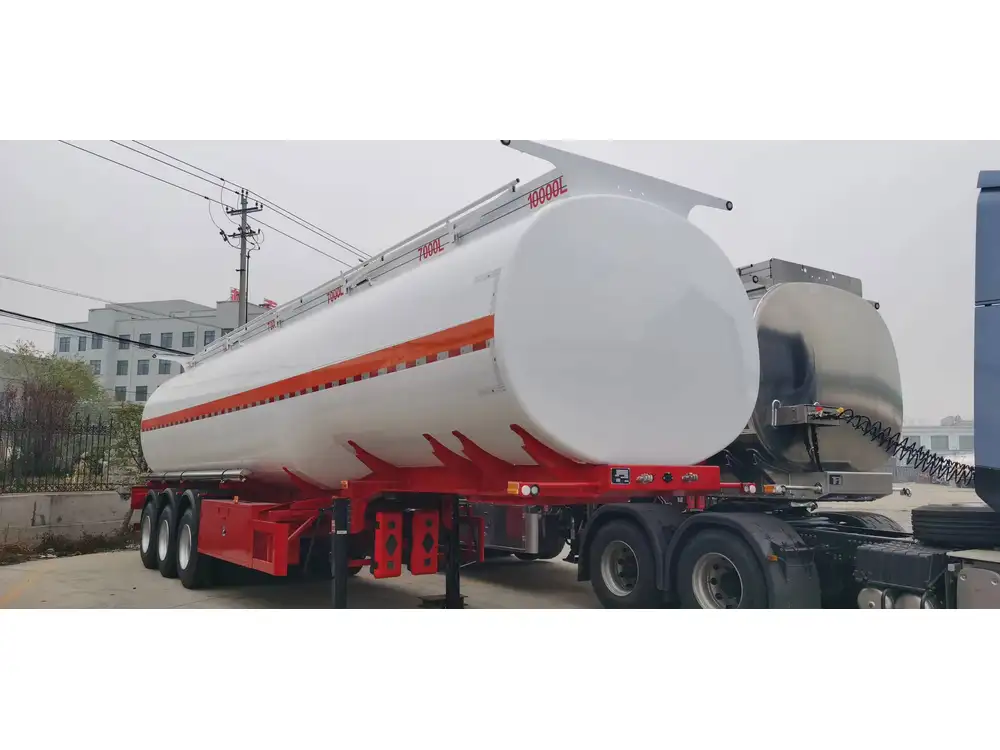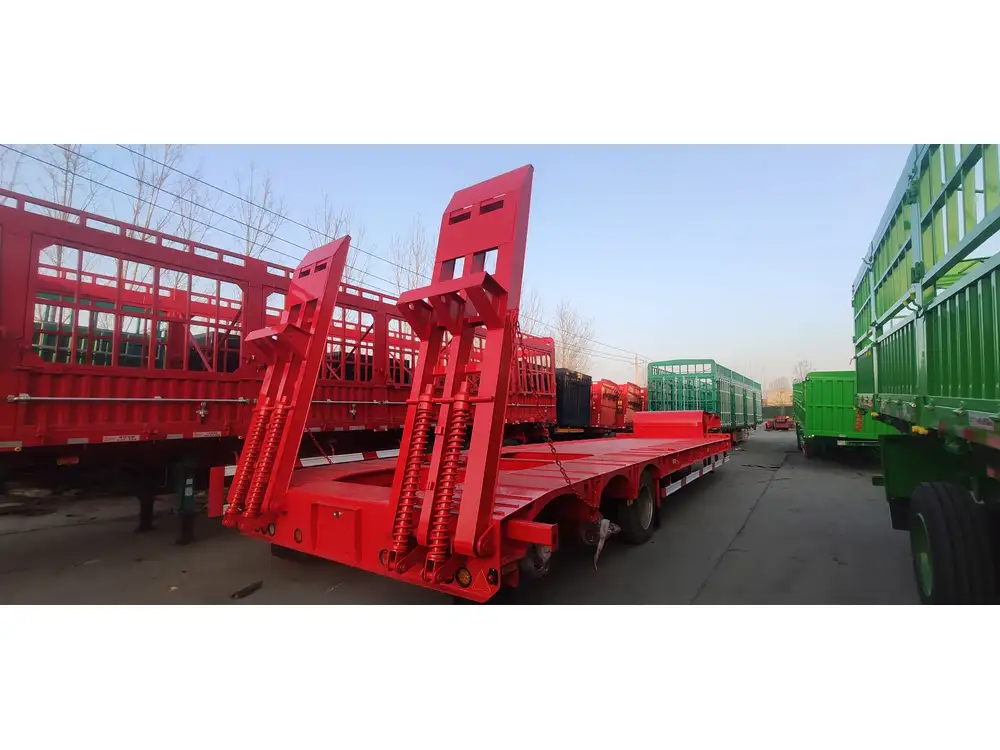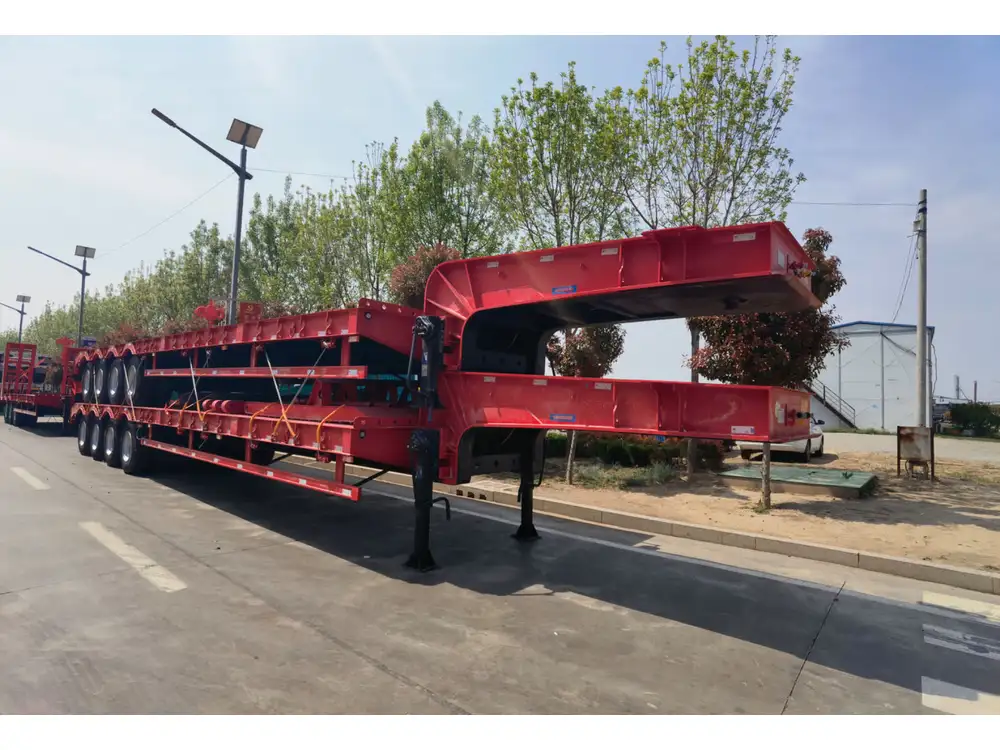Creating a hydraulic dump trailer involves a mixture of engineering precision, materials selection, and functionality. This guide dissects the intricate process of designing and constructing a hydraulic dump trailer, whether for manufacturing purposes or personal projects, catering to professional manufacturers, enthusiasts, and DIY builders alike.
Table of Contents
- Understanding Hydraulic Dump Trailers
- Key Components of Hydraulic Dump Trailers
- 2.1 Chassis and Structuring
- 2.2 Hydraulic Systems
- 2.3 Bed Design
- Step-by-Step Guide to Building a Hydraulic Dump Trailer
- 3.1 Planning and Design
- 3.2 Materials Required
- 3.3 Assembly Process
- Safety Considerations
- Maintenance Tips for Hydraulic Dump Trailers
- Applications of Hydraulic Dump Trailers
- Conclusion
Understanding Hydraulic Dump Trailers
Hydraulic dump trailers are ingenious engineering solutions utilized primarily for the efficient loading, transportation, and unloading of heavy materials such as gravel, sand, firewood, and debris. They depend on hydraulic power to elevate their cargo bed, allowing for simple tipping and unloading. Utilizing hydraulic mechanisms not only enhances operational efficiency but also minimizes manual labor, thus boosting productivity across various industries.

Key Components of Hydraulic Dump Trailers
For a successful construction of a hydraulic dump trailer, understanding its key components is crucial. Let’s take a closer look at each essential element.
2.1 Chassis and Structuring
The chassis serves as the foundational framework of a dump trailer, supporting both its load and hydraulic systems. A robust chassis design should include:
- Material Selection: The choice of material, often heavy-duty steel or aluminum, directly influences the trailer’s durability and weight capacity.
- Frame Design: The frame must be engineered to withstand significant stress; the most common designs include I-beam and C-channel for stability.
- Weight Distribution: Optimizing the layout for even weight distribution prevents trailer tipping and enhances towing safety.
2.2 Hydraulic Systems
The hydraulic system is the heart of the dump trailer, driving the elevation of the trailer bed. Key components include:
- Hydraulic Cylinder: Typically a double-acting cylinder designed for lifting the bed. Sizing must correspond to the intended load capacity.
- Hydraulic Pump: The pump provides power by converting mechanical energy into hydraulic energy. It can be operated through various mechanisms, including electric motors and PTO (Power Take-Off).
- Hydraulic Fluid: Essential for transfer, the hydraulic fluid must be moisture-resistant and have a suitable viscosity index for top performance.
- Hoses and Connectors: High-pressure hoses are necessary for durability, and proper connectors prevent leaks.

2.3 Bed Design
The bed design is crucial for effective cargo handling. Key design considerations include:
- Material: The bed should be constructed from thick steel or other heavy-duty materials to handle abrasive loads.
- Shape and Depth: Ensuring the bed has appropriate dimensions for the volume of material to be transported without compromising stability.
- Tailgate Design: A swing-out or drop-down tailgate can facilitate efficient loading and unloading.
Step-by-Step Guide to Building a Hydraulic Dump Trailer
3.1 Planning and Design
Begin with meticulous planning and a clear blueprint drawing of the intended trailer. Consider the following:
- Purpose: Define the primary use of the trailer (e.g., landscaping, construction) to tailor specifications accordingly.
- Load Capacity: Determine the required weight capacity based on the materials being transported.
- Regulatory Compliance: Research local regulations concerning trailer dimensions and capacities.

3.2 Materials Required
Here’s a list of essential materials for the build:
| Component | Material | Specification |
|---|---|---|
| Chassis | Heavy-duty Steel/Aluminum | Dependent on load capacity and weight design |
| Hydraulic Cylinder | Steel Cylinder | Sized appropriately to handle the trailer load |
| Hydraulic Pump | Electric or PTO | Power output based on hydraulic cylinder specifications |
| Bed | Steel Sheet | Heavy gauge for durability |
| Hoses and Connectors | High-pressure Hydraulic Hoses | Rated for system pressure with proper fittings |
| Wheels | Steel/Aluminum Rims | Size based on load capacity and wheel fitment |
| Braking System | Hydraulic/Mechanical | Depends on trailer design and regulatory requirements |
3.3 Assembly Process
- Chassis Assembly: Start by welding the frame components together, ensuring strong joints and proper alignment.
- Bed Installation: Next, attach the trailer bed to the chassis. Ensure all mounts are secure and properly aligned.
- Hydraulic System Setup: Install the hydraulic pump, hoses, and cylinders. For electric pumps, secure wiring and ensure proper connections.
- Tailgate Attachment: Fit the tailgate, ensuring that it operates smoothly and securely locks in place.
- Wiring and Brake Installation: If hydraulic brakes are being used, ensure they are correctly connected and functioning.
- Final Checks: Conduct a thorough inspection of structural integrity, hydraulic efficiency, and braking functionality.
Safety Considerations
Safety must be a priority during the construction and operation of hydraulic dump trailers. Important precautions include:
- Training: Operators should be thoroughly trained in the safe functioning of hydraulic systems and trailer operation.
- Weight Limits: Clearly label weight limits on the trailer to prevent overloading.
- Regular Inspections: Schedule routine checks on hydraulic components, chassis, and braking system to maintain operational integrity.
- Protective Gear: Utilize appropriate protective gear (e.g., gloves, safety glasses) during construction and operation.

Maintenance Tips for Hydraulic Dump Trailers
To ensure longevity and reliable performance of hydraulic dump trailers, adhere to these maintenance tips:
- Hydraulic Fluid Checks: Regularly inspect the hydraulic fluid levels; top up as necessary and replace any contaminated fluid.
- Visual Inspections: Perform weekly visual checks on the chassis, hydraulic lines, and mounting points for signs of wear or damage.
- Wind-up Cables: Protect hydraulic lines from damage during operation by managing the cables and hoses properly.
- Brake System Monitoring: Frequently assess the braking system functionality, making adjustments or repairs as needed.
Applications of Hydraulic Dump Trailers
The versatility of hydraulic dump trailers permits a widespread range of applications, including:
- Construction: Transporting materials like gravel and soil to construction sites.
- Landscaping: Hauling plants, soil, and mulch for landscaping projects.
- Agriculture: Moving feed and soil for farming purposes.
- Waste Management: Assisting in efficient transportation of debris and refuse.
Conclusion
Embarking on the journey of building a hydraulic dump trailer can be both a rewarding and challenging endeavor. By understanding the intricacies of design, the functionality of components, and the necessary safety measures, manufacturers and DIY builders can create a reliable piece of equipment tailored to meet their specific needs. Emphasizing quality materials, robust engineering, and appropriate maintenance ensures that the hydraulic dump trailer will stand the test of time while delivering optimal performance across various applications.



